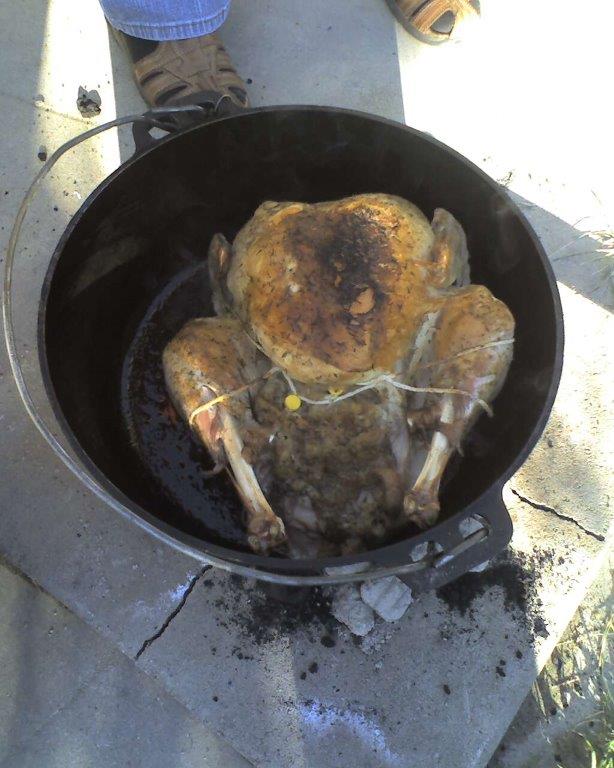Dutch Oven (DO) cooking had been thoroughly covered in many websites. So I won’t pontificate on do’s and don’ts. Except to say whatever one expert tells you to do or not to do, another expert will tell you the opposite. This is especially true of cleaning and seasoning. I will say that anything you can cook in an oven or stove top, can be cooked in a DO.
Okay, just the basics for the folks that are unfamiliar with this style of cooking. The Dutch Oven is made of cast iron (CI). Most of my ovens have legs on the bottom, and a raised lip on the lid. This is so that heat can be applied below and above the oven. The biggest benefit is being able to cook slowly (much like a crockpot), and that the heavy lid keeps moisture in. Turkey cooked in a Dutch Oven comes out very moist, without needed basting!

Pot Roast. In a 14″ deep oven. 
Coals underneath act as a boiler. Coals on top act as an oven. 
Latest addition, 17″ deep MACA 
This oven weighs 96 pounds empty! 
Initial wash prior to seasoning. Rust forms before it dries! 
Turkey ready for cooking. 
If I remember correctly this was a 23 lbs turkey. 
Don’t remember what was cooking. 
Slow cooking. Time to sit and chat. 
Don’t know why I have so many shots of closed ovens. 
Brats, sausages, onions & cabbage. 
Another turkey. 
Same Turkey 
Cooking started. Add coals as necessary. 
Carving time 
This is a pork roast done in a DO. 
There is a roast under those veggies. 
Cook time. 
Appears to be done. 
Roast plated. 
Building a Lasagna. 
Still building Lasagna. 
Cooking Lasagna 
Resting Lasagna. We will be eating soon. 
Smaller Turkey, maybe a 8 lb bird? 
Bottom: Roast in 14″ deep. Middle: Peach Cobbler in 14″. Top: Corn casserole in 10″.